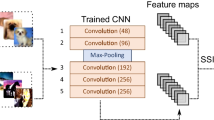Abstract
This paper demonstrates how serious consideration of the deep complexity issues inherent in the design of a visual system can constrain the development of a theory of vision. We first show how the seemingly intractable problem of visual perception can be converted into a much simpler problem by the application of several physical and biological constraints. For this transformation, two guiding principles are used that are claimed to be critical in the development of any theory of perception. The first is that analysis at the ‘complexity level’ is necessary to ensure that the basic space and performance constraints observed in human vision are satisfied by a proposed system architecture. Second, the ‘maximum power/minimum cost principle’ ranks the many architectures that satisfy the complexity level and allows the choice of the best one. The best architecture chosen using this principle is completely compatible with the known architecture of the human visual system, and in addition, leads to several predictions. The analysis provides an argument for the computational necessity of attentive visual processes by exposing the computational limits of bottom-up early vision schemes. Further, this argues strongly for the validity of the computational approach to modeling the human visual system. Finally, a new explanation for the pop-out phenomenon so readily observed in visual search experiments, is proposed.
Similar content being viewed by others
References
Ballard, D. [1986]. “Cortical connections and parallel processing: Structure and function”, Behavioral and Brain Sciences, vol. 9(1), pp. 67–90.
Ballard, D., Hinton, G., and Sejnowski, T. [1983]. “Parallel visual computation”, Nature, vol. 306(5938), pp. 21–26.
Barrow, H., and Tenenbaum, J.M. [1978]. “Recovering intrinsic scene characteristics from images”. In Computer Vision Systems, A., Hanson and E., Riseman (eds.). Academic Press: New York, pp. 3–26.
Corbeil, J.-C. [1986]. The Stoddart Visual Dictionary. Stoddart Publishing: Toronto.
Cowey, A., [1979]. “Cortical maps and visual perception”, Quart. J. Exper. Psychology, vol. 31, pp. 1–17.
Daniel, P., and Whitteridge, D. [1961]. “The representation of the visual field on the cerebral cortex in monkeys”, Journal of Physiology, vol. 159, pp. 203–221.
Feldman, J. (special issue editor), [1985]. “Connectionist models and their applications”, Cognitive Science, vol. 9(1), pp. 1–169.
Feldman, J., and Ballard, D. [1982]. “Connectionist models and their properties”, Cognitive Science, vol. 6, pp. 205–254.
Hinton, G. [1981]. “Shape representation in parallel systems”, Proc. Seventh Int. Joint Conf. Artif. Intel., vancouver. pp. 1088–1096.
Hubel, D., and Wiesel, T. [1977]. “Functional architecture of macaque visual cortex”, Proc. Roy. Soc. (London), vol. B-198, pp. 1–59.
Kirousis, L., and Papadimitriou, C. [1985]. “The complexity of recognizing polyhedral scenes”, 26th Annual Symposium on Foundations of Computer Science, Portland, Ore.
Mackworth, A., and Freuder, E. [1985]. “The complexity of some polynomial network consistency algorithms for constraint satisfaction problems”, Artificial Intelligence, vol. 25, pp. 65–74.
Marr, D. [1982]. Vision, W.H. Freeman: San Francisco.
Moran, J., and Desimone, R. [1985]. “Selective attention gates visual processing in the extrastriate cortex”, Science, vol. 229, pp. 782–784.
Nakayama, K., and Silverman, G. [1986]. “Serial and parallel processing of visual feature conjunctions”, Nature, vol. 320(6059), pp. 264–265.
Neisser, U. [1967]. Cognitive Psychology. Appleton-Century-Crofts: New York.
Poggio, T. [1982]. “Visual algorithms”, MIT AI Memo 683, Cambridge, Mass., May.
Richards, W. [1982]. “How to play twenty questions with nature and win”, MIT AI Memo 660, Cambridge, Mass.
Rumelhart, D., and McClelland, J. [1986a]. “PDP models and general issues in cognitive science”. In Parallel Distributed Processing, D., Rumelhart and J., McClelland (eds.). MIT Press: Cambridge, Mass., pp. 110–146.
Rumelhart, D., McClelland, J. (eds.) [1986b]. Parallel Distributed Processing. MIT Press: Cambridge, Mass.
Stensaas, S., Eddington, D., and Dobelle, W. [1974]. “The topography and variability of the primary visual cortex in man”, Journal of Neurosurgery, vol. 40, pp. 747–755.
Treisman, A. [1985]. “Preattentive processing in vision”, Computer Vision, Graphics and Image Processing, vol. 31, pp. 156–177.
Tsotsos, J. [1980]. A Framework For Visual Motion Understanding, PhD thesis; also, CSRI-TR-114, Dept. of Computer Science, Univ. of Toronto.
Tsotsos, J. [1985]. “Knowledge organzation and its role in the interpretation of time-varying data: The Alven system”, Computational Intelligence, vol. 1(1), pp. 16–32.
Tsotsos, J. [1986]. “Connectionist computing and neural machinery: examining the test of ‘timing”, Behavioral and Brain Sciences, vol. 9(1), pp. 106–107 (commentary on [Ballard 1986]).
Tsotsos, J. [1987a]. “Representational axes and temporal cooperative processes”. In Vision, Brain and Cooperative Computation, M., Arbib and A., Hansen (Eds.). MIT Press/Bradford Books: Cambridge, Mass., pp. 361–418.
Tsotsos, J. [1987b]. “Image understanding”. In The Encyclopedia of Artificial Intelligence, S., Shapiro (Ed.). John Wiley & Sons: New York, pp. 389–409.
Ullman, S. [1983]. “Visual routines”, MIT AI Memo 723, Cambridge, Mass.
Uhr, L. [1972]. “Layered ‘recognition cone’ networks that preprocess, classify and describe”, Ieee Trans. on Computers, pp. 758–768.
van Essen, D., and Maunsell, J. [1983]. “Hierarchical organization and functional streams in the visual cortex”, Trends in Neuroscience, September, pp. 370–375.
van, Essen, D., and Zeki, S. [1978]. “The topographic organization of rhesus monkey prestriate cortex”, Journal of Physiology, vol. 277, pp. 193–226.
Zucker, S. [1985]. “Does connectionism suffice?” Behavioral and Brain Sciences, vol. 8(2), pp. 301–302 (commentary on [Feldman 1985a]).
Author information
Authors and Affiliations
Rights and permissions
About this article
Cite this article
Tsotsos, J.K. A ‘complexity level’ analysis of immediate vision. Int J Comput Vision 1, 303–320 (1988). https://doi.org/10.1007/BF00133569
Issue Date:
DOI: https://doi.org/10.1007/BF00133569




